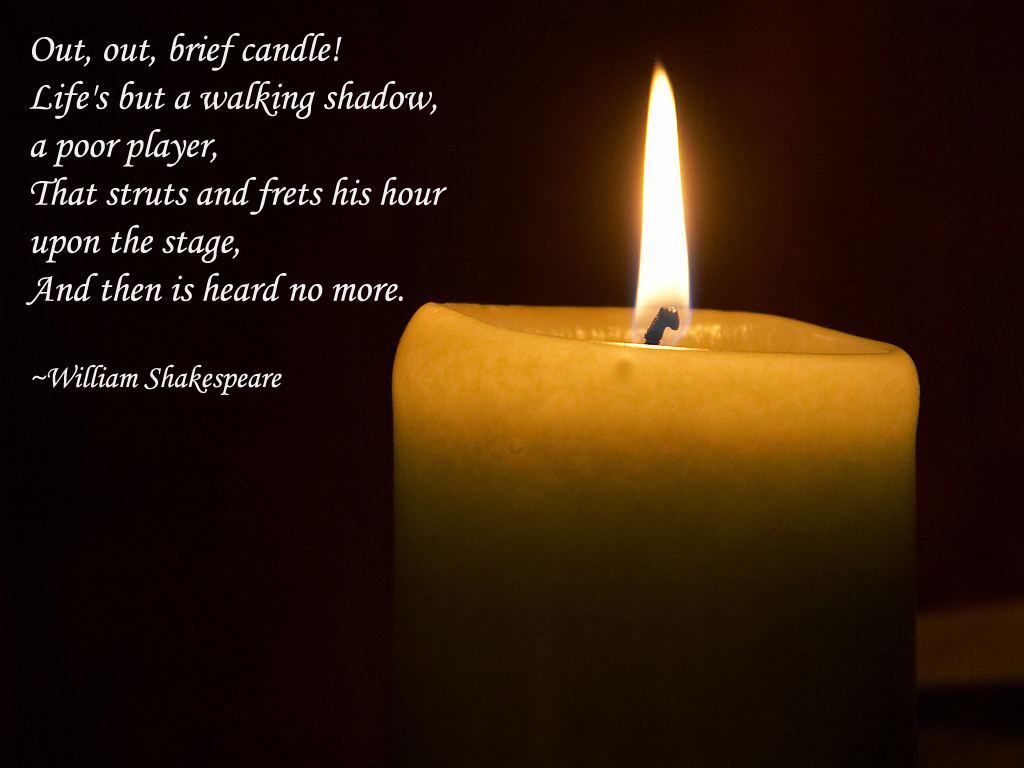You are using an out of date browser. It may not display this or other websites correctly.
You should upgrade or use an alternative browser.
You should upgrade or use an alternative browser.
Uncle Bill Shakespeare...Alive and Well!
- Thread starter Meanderer
- Start date
09/12/2022
Stability and history as King Charles turns to Shakespeare in first address to Parliament
:quality(70)/cloudfront-eu-central-1.images.arcpublishing.com/thenational/WV4ALNUY47PO74QVERI3J2MAAE.jpg)
The order of events. Getty Images
:quality(70)/cloudfront-eu-central-1.images.arcpublishing.com/thenational/NYHZFNLAMQZGOSNRYZP2VXL344.jpg)
Britain's King Charles III and Queen Consort Camilla sit at Westminster Hall, where both Houses of Parliament are meeting to offer their condolences after the death of Queen Elizabeth II, in London. AP
:quality(70)/cloudfront-eu-central-1.images.arcpublishing.com/thenational/ZK2X3ATIIDB7SO6LPOSZWS5ZYE.jpg)
In tribute to his mother, he said: “As Shakespeare said of the earlier Queen Elizabeth — 'she was a pattern to all princes living'.”
Stability and history as King Charles turns to Shakespeare in first address to Parliament
:quality(70)/cloudfront-eu-central-1.images.arcpublishing.com/thenational/WV4ALNUY47PO74QVERI3J2MAAE.jpg)
The order of events. Getty Images
:quality(70)/cloudfront-eu-central-1.images.arcpublishing.com/thenational/NYHZFNLAMQZGOSNRYZP2VXL344.jpg)
Britain's King Charles III and Queen Consort Camilla sit at Westminster Hall, where both Houses of Parliament are meeting to offer their condolences after the death of Queen Elizabeth II, in London. AP
:quality(70)/cloudfront-eu-central-1.images.arcpublishing.com/thenational/ZK2X3ATIIDB7SO6LPOSZWS5ZYE.jpg)
In tribute to his mother, he said: “As Shakespeare said of the earlier Queen Elizabeth — 'she was a pattern to all princes living'.”
Meanderer: Thank you for starting this post! I can't get enough of Shakespeare!
Ditto!Meanderer: Thank you for starting this post! I can't get enough of Shakespeare!
Jamala
Senior Member
- Location
- Butterfly from Herts/UK
Take, Oh Take Those Lips Away
TAKE, O take those lips away
That so sweetly were forsworn,
And those eyes, the break of day,
Lights that do mislead the morn:
But my kisses bring again,
Bring again—
Seals of love, but seal’d in vain,
Seal’d in vain!
– William Shakespeare
TAKE, O take those lips away
That so sweetly were forsworn,
And those eyes, the break of day,
Lights that do mislead the morn:
But my kisses bring again,
Bring again—
Seals of love, but seal’d in vain,
Seal’d in vain!
– William Shakespeare
Jamala
Senior Member
- Location
- Butterfly from Herts/UK
Home of The Bard…unfortunately no portraits exist of Mary Arden and John Shakespeare (parents of William).
Jamala
Senior Member
- Location
- Butterfly from Herts/UK
There is no portrait of Mary Arden and John Shakespeare.
What you are showing is a Sutori collaborative instructional and presentation tool for the classroom. It is a web-based tool for creating and sharing interactive timelines and presentations. It was done to show school children what these two historical figures might have looked like.
A rare recording from the musical Catch My Soul (a musical version of Shakespeare's Othello) in which the Killer played Iago.
Lust Of The Blood - Jerry Lee Lewis
Lust Of The Blood - Jerry Lee Lewis
Last edited:
Beware the Ides of March. But Why?
"It's unlikely even Shakespeare could have predicted how his famous phrase would have evolved."
"You've probably heard the soothsayer’s warning to Julius Caesar in William Shakespeare's play of the same name: “Beware the Ides of March.” Not only did Shakespeare’s words stick, they branded the phrase—and the date, March 15—with a dark and gloomy connotation. It’s likely that many people who use the phrase today don’t know its true origin. In fact, just about every pop culture reference to the Ides—save for those appearing in actual history-based books, movies or television specials—makes it seem like the day itself is cursed."
"But the Ides of March actually has a non-threatening history. Kalends, Nones and Ides were ancient markers used to reference dates in relation to lunar phases. Ides simply referred to the first new moon of a given month, which usually fell between the 13th and 15th. In fact, the Ides of March once signified the new year, which meant celebrations and rejoicing."
"It's unlikely even Shakespeare could have predicted how his famous phrase would have evolved."
"You've probably heard the soothsayer’s warning to Julius Caesar in William Shakespeare's play of the same name: “Beware the Ides of March.” Not only did Shakespeare’s words stick, they branded the phrase—and the date, March 15—with a dark and gloomy connotation. It’s likely that many people who use the phrase today don’t know its true origin. In fact, just about every pop culture reference to the Ides—save for those appearing in actual history-based books, movies or television specials—makes it seem like the day itself is cursed."
"But the Ides of March actually has a non-threatening history. Kalends, Nones and Ides were ancient markers used to reference dates in relation to lunar phases. Ides simply referred to the first new moon of a given month, which usually fell between the 13th and 15th. In fact, the Ides of March once signified the new year, which meant celebrations and rejoicing."
RadishRose
SF VIP
- Location
- Connecticut, USA
https://www.history.com/this-day-in-history/the-ides-of-marchBeware the Ides of March. But Why?
"It's unlikely even Shakespeare could have predicted how his famous phrase would have evolved."
"You've probably heard the soothsayer’s warning to Julius Caesar in William Shakespeare's play of the same name: “Beware the Ides of March.” Not only did Shakespeare’s words stick, they branded the phrase—and the date, March 15—with a dark and gloomy connotation. It’s likely that many people who use the phrase today don’t know its true origin. In fact, just about every pop culture reference to the Ides—save for those appearing in actual history-based books, movies or television specials—makes it seem like the day itself is cursed."
"But the Ides of March actually has a non-threatening history. Kalends, Nones and Ides were ancient markers used to reference dates in relation to lunar phases. Ides simply referred to the first new moon of a given month, which usually fell between the 13th and 15th. In fact, the Ides of March once signified the new year, which meant celebrations and rejoicing."
Gaer
"Angel whisperer"
- Location
- New Mexico U.S.A.
I am so glad I read that! This now makes sense! It's a time of the new Spring year with celebrations and rejoicing. It's a renewal, not a time of the year to be feared. All my life I'd heard, "Beware the Ides of March", said with a dire expression of warning.Beware the Ides of March. But Why?
"It's unlikely even Shakespeare could have predicted how his famous phrase would have evolved."
"You've probably heard the soothsayer’s warning to Julius Caesar in William Shakespeare's play of the same name: “Beware the Ides of March.” Not only did Shakespeare’s words stick, they branded the phrase—and the date, March 15—with a dark and gloomy connotation. It’s likely that many people who use the phrase today don’t know its true origin. In fact, just about every pop culture reference to the Ides—save for those appearing in actual history-based books, movies or television specials—makes it seem like the day itself is cursed."
"But the Ides of March actually has a non-threatening history. Kalends, Nones and Ides were ancient markers used to reference dates in relation to lunar phases. Ides simply referred to the first new moon of a given month, which usually fell between the 13th and 15th. In fact, the Ides of March once signified the new year, which meant celebrations and rejoicing."
Thanks for setting me straight!
Warrigal
SF VIP
- Location
- Sydney, Australia
Julius Caesar was the Shakespearean play that I studied in my final year at High School. We were required to memorise passages to quote when sitting for the Leaving Certificate English exam.
In the play Caesar is warned by a soothsayer to be careful, because the signs are ominous, by crying out "Beware the ides of March". Caesar refuses to listen and we get the famous words -
"A coward dies a thousand times before his death, but the valiant taste of death but once. It seems to me most strange that men should fear, seeing that death, a necessary end, will come when it will come."
Later, Caesar sees the soothsayer again and says to him, "The ides of March are come", to which the sooth sayer replies, "Aye Caesar, but not gone." That day, Caesar is assassinated by the conspirators including his friend Brutus.
This play has stuck in my mind since I was a teen and I love the example of courage depicted in the play.
I did not plan it, but I was married on March 15, the ides of March, in 1963.
In the play Caesar is warned by a soothsayer to be careful, because the signs are ominous, by crying out "Beware the ides of March". Caesar refuses to listen and we get the famous words -
"A coward dies a thousand times before his death, but the valiant taste of death but once. It seems to me most strange that men should fear, seeing that death, a necessary end, will come when it will come."
Later, Caesar sees the soothsayer again and says to him, "The ides of March are come", to which the sooth sayer replies, "Aye Caesar, but not gone." That day, Caesar is assassinated by the conspirators including his friend Brutus.
This play has stuck in my mind since I was a teen and I love the example of courage depicted in the play.
I did not plan it, but I was married on March 15, the ides of March, in 1963.














